Our mission is to assist any child with disabilities in various ways through community services, financial assistance, education, in home support and social interactions in order to help the child to gain independence, engage in activities that enhance the quality …
Continue reading
Tag Archives: console
Baldwin Console
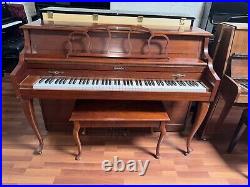
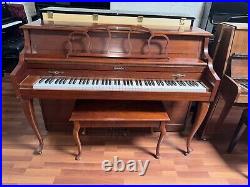
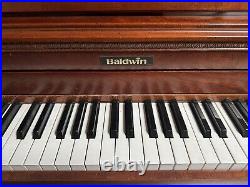
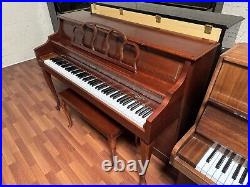
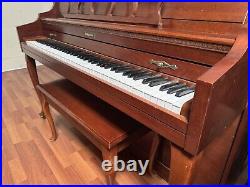
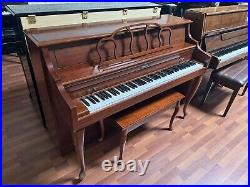
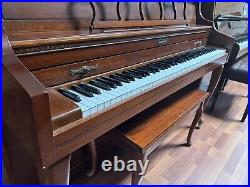
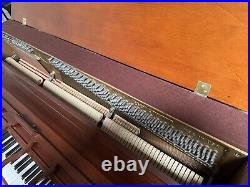
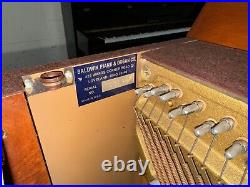
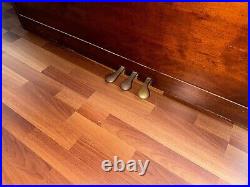

Here we have a reconditioned Baldwin Console Piano. Make: Baldwin Model: Console Finish: (SM) Satin Mahogany Statues: Used/Reconditioned. The company was founded by Dwight Hamilton Baldwin a Cincinnati music educator. In 1865 Baldwin hired Lucien Wulsin as a bookkeeper and in 1873 offered him a full partnership in the company. In 1887 Steinway made one of the biggest errors in their history. They cancelled Baldwin as a Steinway & Sons piano dealer thereby creating Steinway’s biggest domestic competitor of the 20th century. This cancellation led the Baldwin company to begin designing and building their own pianos and organs. In 1889 they acquired the Hamilton organ company of Chicago and the following year established the Baldwin Piano Company. Their goal was to put the Baldwin brand on only the highest quality pianos made. Baldwin vowed to build the best piano that could be built and subsequently formed two production companies: Hamilton Organ, which built reed organs, and the Baldwin Piano Company, which made pianos. The company introduced its first grand piano in 1895. Baldwin won their first major award the “Grand Prix” in Paris in 1912. This was the first American manufactured piano to win such an award. By 1913 Baldwin was exporting to thirty-two countries and had dozens of retailers throughout the United States. (Baldwin Vertical) as advertised. Available at our NEW Arroyo Pasadena location.

Wurlitzer Model 2780 Console Piano with Bench Mid-80s Please Read Before Bidding








It has all original parts and is in great tunable condition with only a few cosmetic defects. It has not been regularly played or tuned but has otherwise been well cared for (indoors, temperature and humidity controlled).

Yamaha P2 Continental Console Upright Piano 45 Satin Ebony
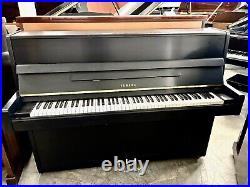
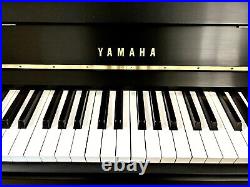
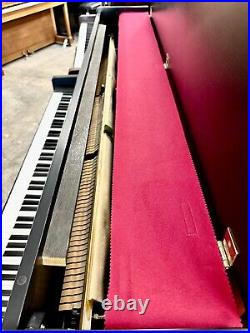
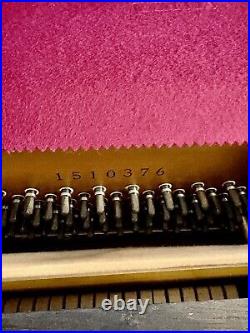

Beautiful Yamaha P2 Continental Studio Upright Piano. This piano features a gorgeous satin ebony finish. The studio size is most popular among music professionals for its full and rich sound, while the legless continental design makes it ideal for the space conscious. It has a lovely brighter tone and excellent touch. This is an excellent deal on an excellent Yamaha studio piano! Knauer Pianos has been offering fine pianos to professionals and beginners for over 30 years. We are dedicated to providing the highest quality pianos at the most affordable prices. That is why piano buyers from all over the country choose us. Ben Knauer, the founder of Knauer Pianos, is a 2. Generation piano technician and stands behind every piano we sell. The Knauer family is from Hamburg Germany and the family store there provides a great resource for fine European pianos. Our technicians go through each piano to make sure that they are in top condition. Does not apply to pianos that were customized i. Added player systems, refinished, etc. We are located in the San Fernando Valley just north of Los Angeles. We can also add a PianoDisc CD Player System to any piano from us at a drastically reduced price.

Vintage Ivers & Pond Console Piano Style 12 Custom Deluxe with Bench






This is a vintage Ivers & Pond console piano with a bench. It is a style 12 custom deluxe, custom-built exclusively for The Tallman Piano Store Inc. This piano and bench both feature a lighter tone wood. The piano measures about 58″ long, 40.5″ tall, and 25 wide. This item comes in good pre-owned condition with some scratches and scuffs due to previous use, aging, and storage. It is missing one of the handles that opens to view the keys and the bench has a wobbly leg and the fabric needs some cleaning.

Kohler & Campbell Console
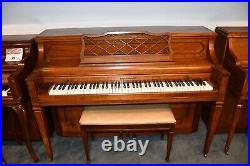
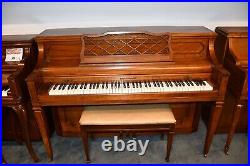
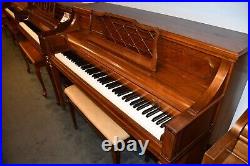
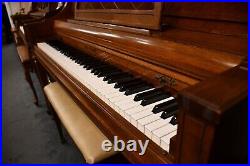
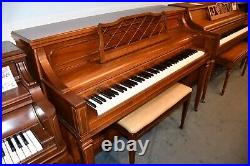
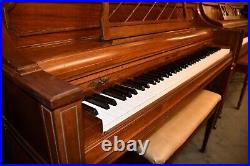
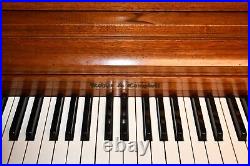
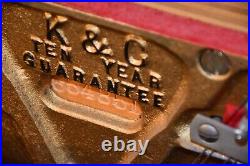
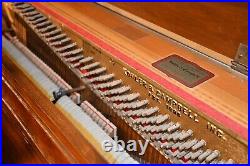

Here we have a reconditioned Kohler & Campbell Console Piano. Make: Kohler & Campbell Model: Console Finish: Satin Oak Statues: Used/Reconditioned. KOHLER & CAMPBELL PIANOS. Founded in 1896 as a partnership between Charles Kohler and J. Campbell, in less than 20 years Kohler and Campbell became one of the world’s leading manufacturers of upright and grand pianos, player pianos and automatic reproducing actions. Campbell was a machinist who invented several wood and iron making machines and later took up piano making. John Campbell has been credited with pioneering many manufacturing techniques that instantly created more value for the dollar in Kohler & Campbell pianos. This was and is the cornerstone of Kohler & Campbell pianos. The best value for the dollar. At the age of 20, Charles Kohler embarked on a piano-making career. Considered a genius as a factory organizer and businessman, he was the perfect complement to Campbell. Together they built one of America’s largest piano companies. As a testament to the quality, it is said that some of their largest customers were piano manufacturers of note that carried Kohler & Campbell pianos in their retail establishments. Available at our Pasadena location.

Mason & Hamlin Console
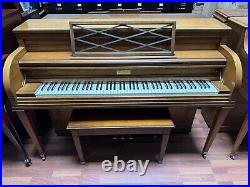
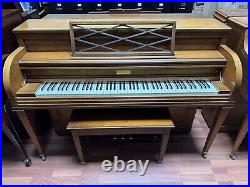

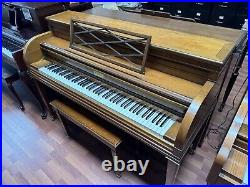
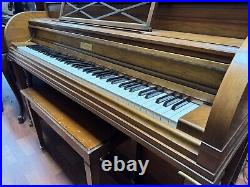
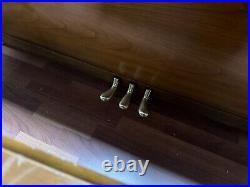
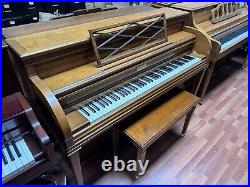
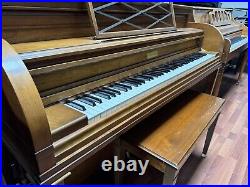
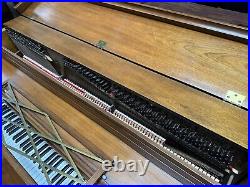

Here we have a reconditioned Mason & Hamlin Console Upright Piano. Make: Mason & Hamlin Model: Console Finish: (SW) Satin Walnut Status: Used/Reconditioned. MASON & HAMLIN PIANOS. Mason & Hamlin was founded in Boston, Massachusetts in 1854 by Henry Mason, son of Lowell Mason, the American hymn composer and musical educator, and Emmons Hamlin, a mechanic and inventor who had worked for melodeon makers Prince & Co. In Buffalo, New York. They originally manufactured only melodeons, but in 1855 introduced the organ-harmonium or flat-topped cabinet organ. This design placed the bellows vertically and underneath the reeds and served as the model for the suction operated American-style reed organ. Mason & Hamlin supplied organs to several prominent composers, notably Franz Liszt, whose name the company applied to their patented selective sustain mechanism for organs comparable to the sostenuto in pianos. Mason & Hamlin began manufacturing pianos in 1883. Initially they built only upright pianos featuring a patented method of tuning and maintaining string tension which they marketed as the screw stringer and intended as an improvement over the traditional system with tuning pins. In 1895, the piano department was completely reorganized by Richard W. Gertz, an independent piano designer from Germany who had created new scales for them earlier that year. Gertz was elected secretary of the company in 1903, and president in 1906, and had patented the company’s Tension Resonator, a device fastened to the perimeter of the wooden structure of pianos meant to prevent their sounding boards from flattening. This was first included in their grands in 1900. The most illustrious concert artists of the day aligned themselves with piano manufacturers; Sergei Rachmaninoff used a Mason & Hamlin to make his 1924 recording of his Second Piano Concerto. Composer Maurice Ravel said of Mason & Hamlin pianos, While preserving all the qualities of the percussion instrument, the Mason & Hamlin pianoforte also serves magnificently the composer’s concept by its extensive range in dynamics, as well as quality of tone. American positioned Mason & Hamlin as the “artist’s brand” among the firm’s premier lines, which also included Chickering and Sons (“family use”) and Wm. (“Metropolitan Opera’s favorite”). American’s sales began to decline in 1928 and collapsed after the stock market crash in late 1929. In 1932, American itself merged with Aeolian, consolidating the control of more than 20 brands of pianos in the Aeolian-American Company. Mason & Hamlin, which had been at the former Hallet, Davis & Company piano factory in Neponset, Massachusetts, was moved to a separate plant at the Aeolian-American complex in East Rochester, New York. The company began sponsoring the Mason and Hamlin Prize piano competition. Piano manufacturing ceased in the United States in 1942 under authority of the War Production Board due to World War II, and Mason & Hamlin production shifted to military gliders. The company changed hands several times during the post-war era, becoming part of the Sohmer piano company in 1985. Over the decades, the designs of the pianos were altered to the extent that they had little in common with the “classic” Mason & Hamlin pianos of the pre-Depression era [citation needed]. He named the new enterprise the Mason & Hamlin Companies. Greer’s goal was to resurrect the Mason & Hamlin pianos of the pre-Depression era by returning to the original specifications-including Gertz’s scale designs-and use of materials. A few changes were made, including the use of Renner action parts and slightly longer keys. From 1990 to 1994, about 600 pianos were manufactured, mostly Model A and BB grands, along with a few Model 50 uprights. Kirk Burgett, after taking control of Mason & Hamlin, had engineers digitally reconstruct blueprints of the company’s high-quality pianos in the early 1900s, acquired decades-old, specialized tools, and trained the first employees for two years, in order to produce pianos with a high level of craftsmanship like the offerings from the late 19th century and early 20th century. Mason & Hamlin pianos are still manufactured in Haverhill and distributed throughout the U. Canada, Europe, and Asia. Mason & Hamlin is a member of NAMM, the International Music Products Association and Piano Manufacturers Association International. Each Mason & Hamlin piano includes a Tension Resonator, which is a system of steel rods under moderate tension, anchored to the wooden structure on the opposite side of the sounding board from the strings and iron frame. In grand pianos these rods fan out from one or two central hubs and are attached at intervals around the rim and to the belly rail; the model 50 upright has a rod stretched between the case sides. This adds strength and rigidity to the rim by locking the rim into its permanent shape and which in turn preserves the “crown” of the soundboard. (Mason & Hamlin Console) as advertised. Available at our NEW Arroyo Pasadena Location.

Kimball Console
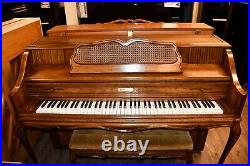
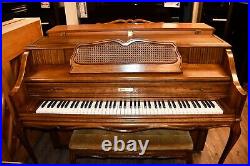
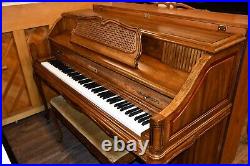
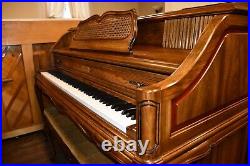
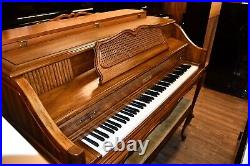

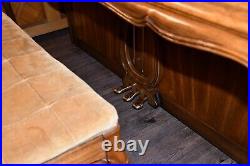
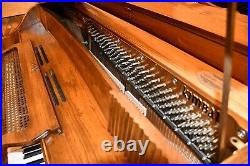
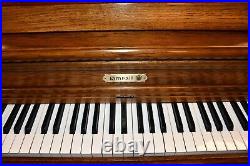

Here we have a reconditioned Kimball Console Piano. Make: Kimball Model: Console Finish: Walnut Statues: Used/Reconditioned. There are thousands of moving parts in a piano and many delicate components.

Kimball Console Upright Piano and Bench
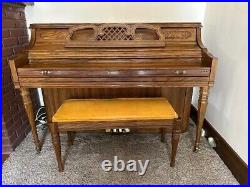
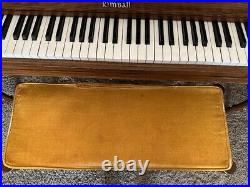
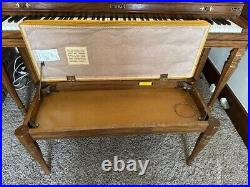
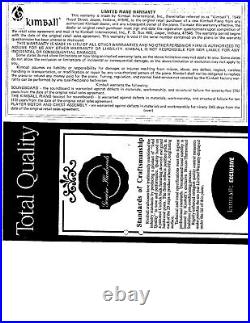

Kimball Upright Piano and Bench. PIANO NEEDS ONE PIANO WIRE AND A BENCH COVER. If you have any questions please send us a message. Leaving any negative or neutral feedback.

Beautiful Yamaha Disklavier MX500 G Console Piano with DKC55 Player System
















Amazing condition Yamaha Disklavier MX500 G Piano With DKC55 Disklavier III. Includes remote and a few disks for the DKC55. American-built with sturdy support and superior craftsmanship, this Yamaha MX 500 offers some of the best sound you’ll hear out of a console piano, with a powerful bass you’d expect to hear from a larger instrument. Not content to be an instrument only, the Yamaha MX 500 also has a beautiful Queen Anne cabinet with a beautiful finish that could be mistaken for brand new! On top of all of that, this piano is equipped with a DKC55 Disklavier system, which will allow you to enjoy live music with the touch of a button. With life-like playback you’ll swear there’s a live concert in your home! These systems are very expensive on new pianos, adding close to 15k, but here you get the piano and the player system and still save thousands!

Schubert Console
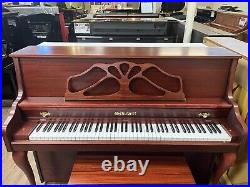
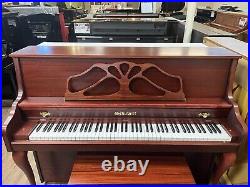
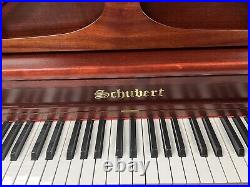
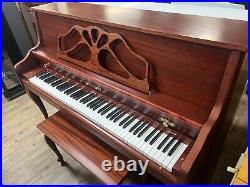
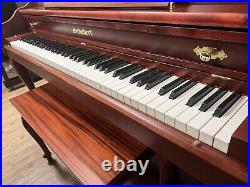
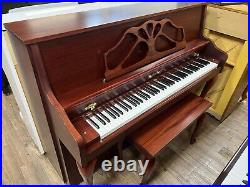
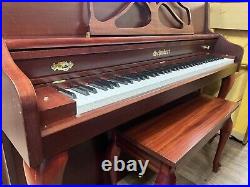

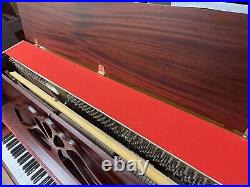

Here we have a Schubert Console Piano. Make: Schubert Model: Console Finish: (SM) Satin Mahogany Status: Used/Reconditioned. The Schubert Piano Company was established in New York City in 1880 by Mr. Peter Duffy, and then incorporated in 1885 with Mr. The firm built very well made pianos, with several rather extravagant models were available. By the turn-of-the-century, Schubert was building an impressive line of upright pianos, player pianos and baby grand pianos. Schubert also produced a very successful line of player pianos under the “Automatic Player Piano Company” brand name. Perhaps Schubert was best known for their “Mandolin Piano”. The Mandolin Piano was an upright piano equipped with a mechanism that dropped metal tabs between the piano hammers and strings via pressing the middle pedal. This effect gave the instrument the sound of a mandolin, zither, banjo or guitar. The Schubert Piano Company even composed and published special sheet music for the Mandolin Piano, and it was marketed very aggressively. This unique sound quickly caught on and became widely known as the “rinky tink” or “honky tonk” piano sound used in saloons and bars across the land for decades. Lester continued to build pianos under the Schubert brand name until 1937. (Schubert Console) as advertised. Located at our Pasadena location.


